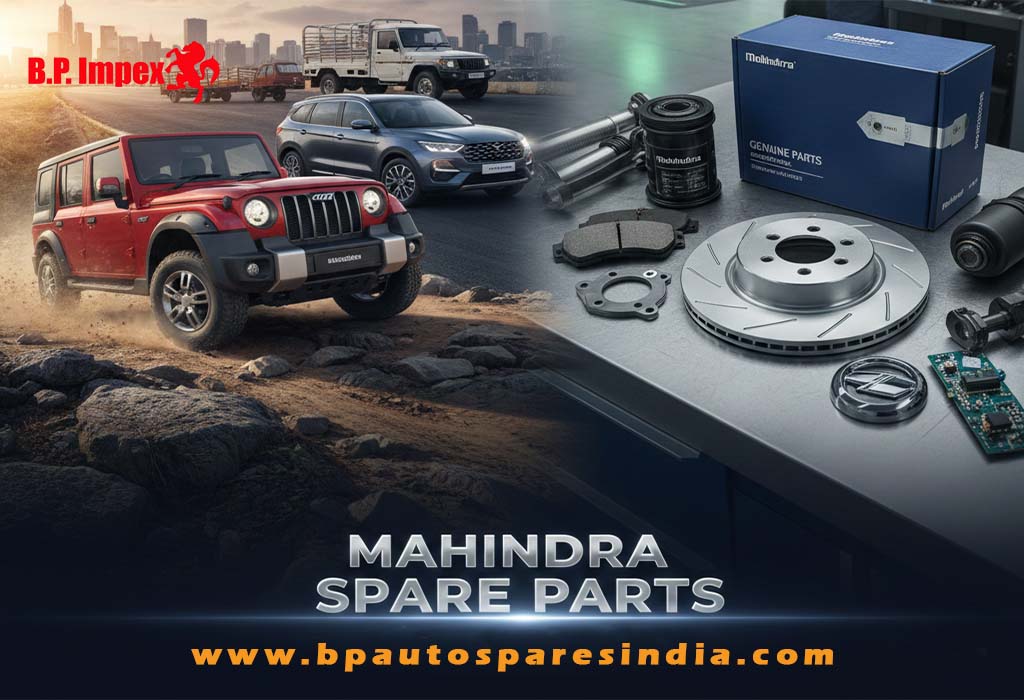 The auto parts canyons of the highly reputed Mahindra Spare Parts and Mahindra Parts suppliers before getting down straight to the steps to replace carburetors on most cars would first like to explain when, why and how carburetors came into existence.
The auto parts canyons of the highly reputed Mahindra Spare Parts and Mahindra Parts suppliers before getting down straight to the steps to replace carburetors on most cars would first like to explain when, why and how carburetors came into existence.
Carburetors came into existence in the late 18th century. Since then, a lot of composition and design changes have been attributed to carburetors and variations have been carried out to develop and roll out engines with increased power, performance and efficiency. Today, we have with us different types of carburetors segregating themselves from each other in terms of function, complexity, and effectiveness. Each one is made to suit and work effectively with certain automotive applications.
Carburetors are designed to mix fuel and air in an appropriate ratio for complete combustion in an internal combustion engine. Carburetors are designed to function on the principle of static and dynamic air pressure which is quite popularly known as Bernoulli’s principle. According to this principle, the air is pumped into the engine more quickly, increasing its dynamic pressure. This dynamic air pressure is monitored by the carburetor which allows the corresponding amount of fuel to mix with the air for a complete combustion in an internal combustion engine.
In a nutshell, a carburetor is basically a hunk of aluminum with a bunch of holes drilled into it which is housed in vehicles to carry out the following functions,
- It is responsible for combining the air and fuel for developing a highly combustible mixture in the internal combustion engine.
- It also monitors the proportion of air and fuel that goes into the combustion chamber by matching the supply quantity of fuel to the amount of air entering the engine.
- It also happens to control the engine’ speed and performance.
You can also check our blog on Carburetors to know more about their working and functionality.
The ideal ratio of air-to-fuel for efficiency, by weight, is 14.7:1. The rate and the ratio of fuel and air that enters the engine entirely depend on the driver’s want from the engine. So, ultimately the driver’s job is to respond correctly to the throttle input from the driver and the stored vacuum in the engine. This inspection helps carburetor send an appropriate amount of air and fuel mixture into the internal combustion engine.
When the engine is in non-working condition and is idling, the throttle plate is nearly closed, not allowing air to peek through the carburetor. On the slip side, when the driver pushes the accelerator pedal all the way down, the throttle pedal is completely open, allowing the engine to swallow more air and along with it more fuel.
When the carburetor isn’t working fine, this leads to disproportionate quantities of air and mixture to mix together in an internal combustion engine, which leads to certain car running conditions. There may be a loss of power; engine overheating and the fuel economy can suffer at the expense of it. Now, the steps to carry out Carburetor replacement we have mentioned below is meant for most cars and is not subjected to any specific car model. Since the automobile market is full of different types of carburetors and not all automakers use the same kind, largest Mahindra Parts distributors have put up this blog to provide this overview which is boasting all of the basics of carburetors in general.
Comprehensive Guide to Replace Carburetors on Most Cars
Tools You’ll Need
- Complete Extension set
- Nut wrenches
- Light solvents, such as brake clean or alcohol
- Marker and tape
- Pliers
- Scraper or razor blade
- Screwdrivers
- Shop rags or towels
- Small fuel-safe bowl or tray
- Small pry bar
- Socket set
- Wrench set
- Latex gloves
- Safety glasses
- Coveralls
Steps to Replace Carburetors in Most Cars
- First, open the hood of the car and remove the air cleaner assembly in order to gain full access to the carburetor.
- Now applying the parking brake, start the engine. Going to the carburetor again, check the signs of visible fuel leaks around the seals of the carburetor.
- Once you find that the seals are alright and there are no signs of leaks, look further to make sure that it is indeed the carburetor that needs replacement.
- Now, with the engine still running at the idle, make some adjustments to the fuel and air mixture screws. If the engine idling doesn’t change then that means there is some problem with the carburetor and it needs to be replaced as soon as possible.
- Turn the engine off and carefully monitor the carburetor throttle bore. The buildup of carbon in the throttle bore points straight to the fact that there is rich fuel condition, which is often caused by internal carburetor damage.
- Remove the rubber vacuum hoses from the carburetor. Make sure you mark the areas with the masking tape or a marker to remember the exact spots where the hoses need to be reconnected again.
- Now using the pliers remove the fuel lines from the carburetor.
- Now, disconnect the throttle linkage from the carburetor.
- Once all the fuel lines are disconnected from the carburetor, using the nut wrench unscrew all the nuts from the intake manifold stud bolts and remove the carburetor.
- Before replacing the old carburetor, compare both, the new and the old one to verify that you have the right carburetor with you.
- Also, carefully study the gasket between the intake manifold and the carburetor. If it is broken, bent or wrapped, replace it too.
- After the intake manifold gasket has been replaced, set the new carburetor onto it and secure the carburetor to it by tightening the mounting bolts.
- Reconnect the throttle linkage and the new fuel lines again to the new carburetor following the marks on the old carburetor.
We strongly recommend that if you are not used to working under the hood of the car, have a professional or a mechanic replace the carburetor for you.







Leave a Reply